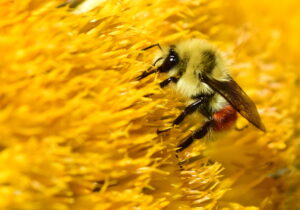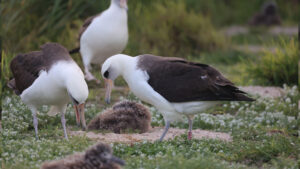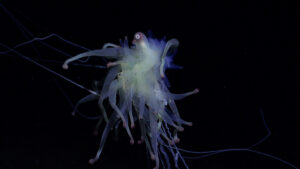Komodo dragons are the heavyweights of the reptile world. These dinosaur-like creatures can snap a person’s legs in two using only their jaws. In the last 15 years, there have been several devastating attacks on humans, some deadly.
You won’t find Komodo dragons wandering around the volcanoes of Oahu, like on the set of Jurassic Park. They only live on five Indonesian Islands. Komodo Island and Rinca Island have the largest populations of them.

Komodo Dragons are the largest lizard on earth. There are only around 3,000 left, all in Indonesia.
With bodies encased in bone-like armor, it’s nearly impossible for a Komodo dragon to feel the impact of, say, a fist of someone fighting to survive. They’re proportionately powerful too. They grow up to three metres long and weigh more than 70kg. Even with such mass, they can run up to 20kph.
Their jaw and throat muscles are designed for devouring large chunks of meat and their 60 serrated teeth measure up to 2.5cm each. They can eat up to 80% of their body weight in one meal. Under threat, a Komodo dragon can vomit the contents of its stomach to lessen its weight in preparation for the confrontation.
Slow-acting venom
Komodos are stealthy stalkers who hunt for almost any kind of meat, from rodents to buffalos. Sometimes they hunt and kill quickly. Other times they spend hours stalking until just the right time to attack. Then, using their monumental power, they bite their victim, releasing bacteria and a slow-acting venom. After the prey has died –- which can take up to four days -– the Komodo dragon uses its powerful sense of smell to locate the body.

Komodo dragons are the heavyweight boxers of the reptile world. Photo: NBC News
Although attacks on humans are uncommon, they do happen. In 2007, an eight-year-old boy had been playing with friends in scrubland near his Indonesian village. Attacking from behind, the dragon held the boy in his jaws until he bled to death. It was a Komodo dragon’s first fatal attack on a human in 33 years.

Two Komodo dragons fight with each other. Photo: Shutterstock
A living nightmare
The following year, another tragic meeting between human and dragon occurred.
A group of scuba divers was swept onto the shores of Rinca Island after their boat blew off course. Immediately, they endured a living nightmare that lasted two days and two nights, where Komodo dragons repeatedly tried to prey on them. More than 1,000 of the creatures live on Rinca Island, which is less than 200 square kilometres in area.
During one attack, a dragon came at one of the diver’s bare feet. Even a weighted diving belt swung at the powerful lizard couldn’t deter it. Thankfully, the group was rescued before a fatality occurred.
A year later, Muhamad Anwar wasn’t so lucky. He’d been collecting apples from high in a tree when he lost his balance. Circling below, a group of Komodo dragons waited to profit from Anwar’s misstep. When bystanders ran to the commotion, it was already too late. Anwar suffered fatal bites to his hands, body, legs, and neck. He died shortly after.
So how might one avoid being killed by a Komodo dragon? The best defense is to stay clear. Certainly, don’t underestimate them.
But as always, the dragons have more to fear from humans than we have to fear from them. Less than 3,000 of the giant lizards remain. In 1980, Komodo National Park was founded to help protect these primeval creatures. Now tourists can watch them under the protection of park rangers for a yearly membership fee of $1,000.
“I think that’s cheap,” said the region’s governor.
Aside from visiting Komodo dragons at the zoo, that’s the safest way to see them.

If you meet a Komodo dragon up close in the wild, try running away in a zigzag. They are fast sprinters but terrible with sharp turns. Photo: Britannica
What to do, if…
But if you come across one in the wild, you could try running in a zigzag pattern. Komodo dragons are good sprinters, but they are terrible at sharp turns, possibly because their tails are as long as their bodies.
Keep your distance to avoid an ambush and avoid sudden movements. If you find yourself being bitten, find a heavy or sharp object to fight back with. Bare hands won’t do much.
Adult Komodo dragons are too heavy to climb trees too, so heading upward could help. There is currently no Komodo antivenin on the market.
But even this venom isn’t all bad. Recently, an Australian researcher discovered that it can be useful for treating blood clots. The scientist is currently working on a formula that includes the venom as a type of blood thinner.

Komodo dragon, Rinca Island. Photo: Shutterstock






